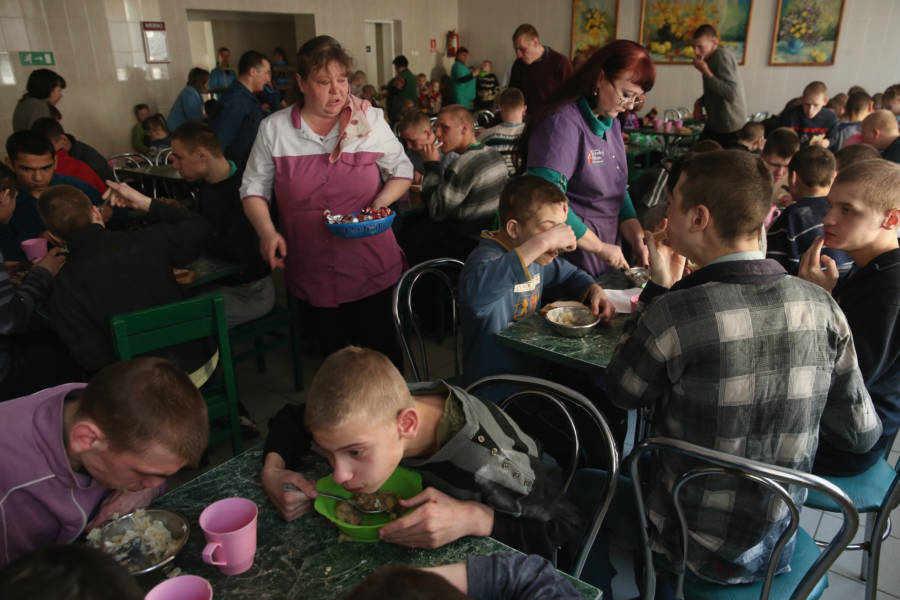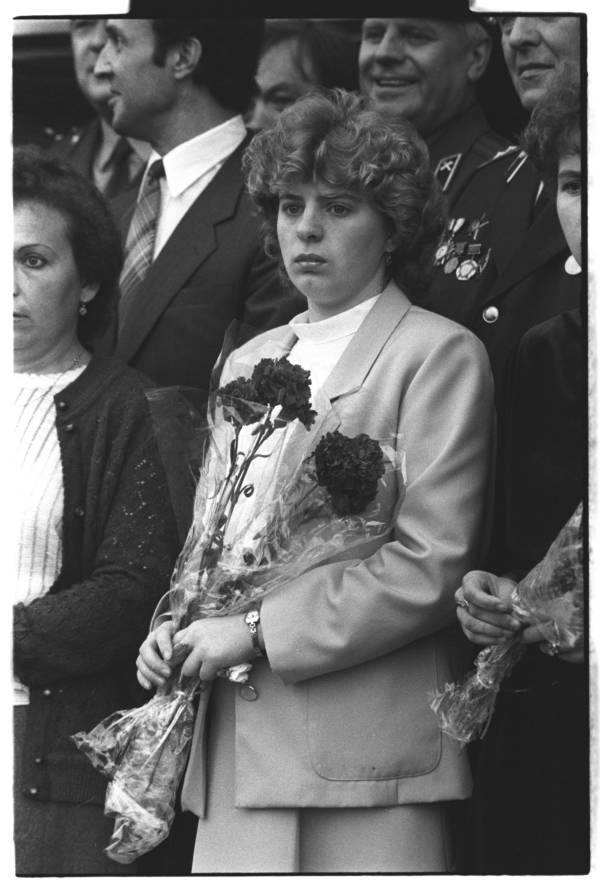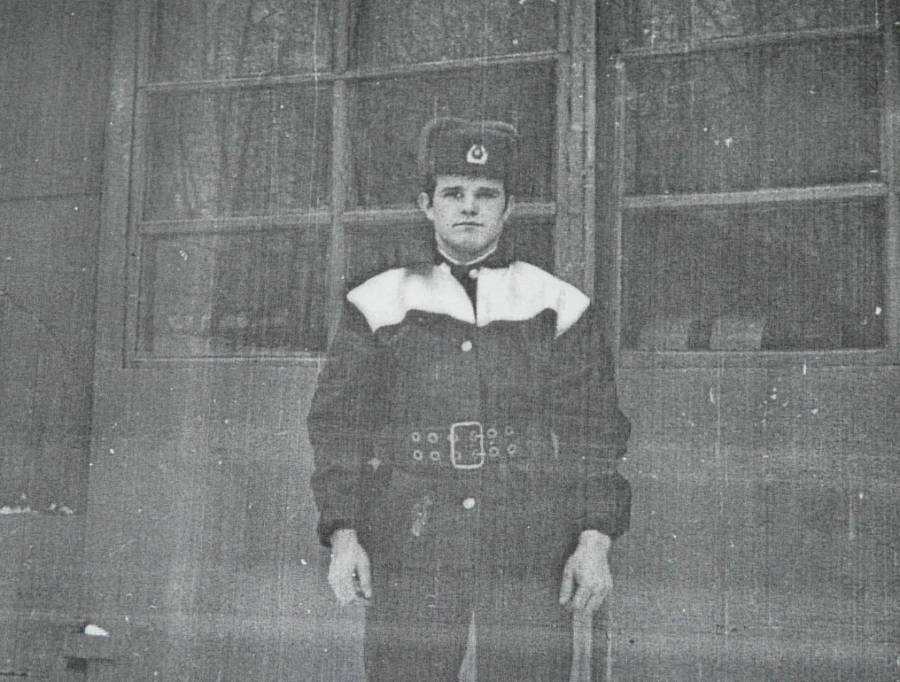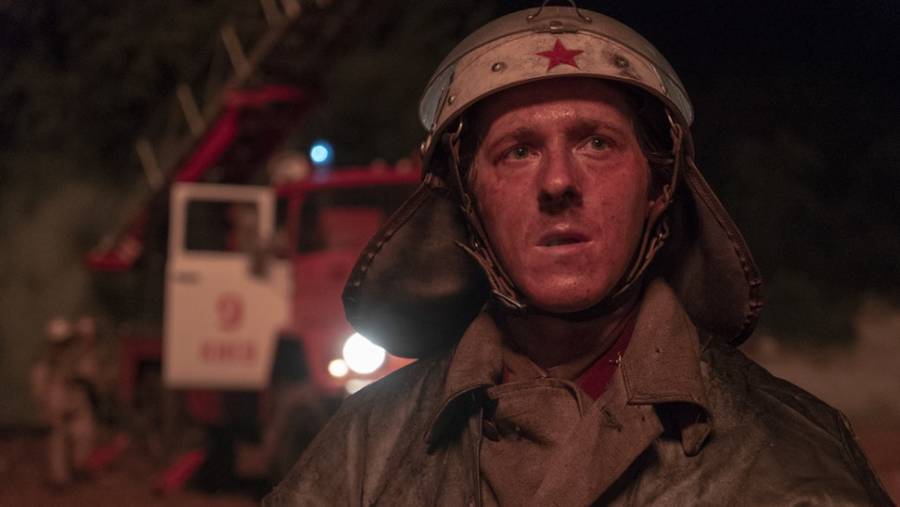Vasily Ignatenko was just 25 when he succumbed to slow death via radiation poisoning after fighting the fires of Chernobyl.

Sputnik/RIAVasily Ignatenko was 25 years old when he died of radiation.
Even after more than three decades, the death toll of the Chernobyl nuclear disaster is still wildly disputed.
According to Newsweek, the wafting clouds of radioactive material over Ukraine, Belarus, and even as far as Sweden, killed 4,000 people. That’s what U.N. agencies found, at least. Others estimate deaths in the hundreds of thousands.
Despite the fact that a universally agreed upon figure is nonexistent, Chernobyl was one of the most historic disasters of the 20th century.
The trouble started when the facility’s RBMK Reactor No. 4 experienced an unexpected surge of power, exploded, and blew the roof off. The open-air graphite fires weren’t extinguished for nearly two weeks, causing plumes and plumes of deadly radiation to float over and settle on vast territories of Russian and Eastern European land. To this day, children in the region are born with birth defects.

Sean Gallup/Getty ImagesDisabled children in the cafeteria at the Vesnova Home for Invalid Children, 2016. The consequences of Chernobyl linger to this day.
Before the long-term effects became clear, however, boots on the ground — loyal to the Soviet leadership ordering them to do their jobs — were the first to respond to the disaster. Most emergency responders, however, were unaware of the true risks.
Among the brave souls on the scene was Vasily Ignatenko, a firefighter responding to a seemingly standard blaze at the Chernobyl plant. He died due to radiation exposure less than three weeks later — but his historic contributions helped stop the crisis from becoming even worse.
The Chernobyl Meltdown Of April 26, 1986
The Chernobyl Nuclear Power Station took its name from a medieval town nine miles away. The first reactor was completed in 1977 and the whole town of Pripyat was developed around the site. Workers and their families settled there while the USSR envisioned the city as a model for its atomic future. Then, in 1986, disaster struck.
The disaster itself began with a seemingly innocuous test on Reactor No. 4 intended to gauge how functional the plant could be during unexpected power loss. The goal was to see if the power generated from steam turbines could be effectively transferred to backup generators.

SHONE/GAMMA/Gamma-Rapho/Getty ImagesView of the Chernobyl plant after the explosion. April 26, 1986.
When the flow of water coolant decreased and the turbines slowed down, all data pointed in the right direction: The reactor’s energy output rose as expected. The next step was inserting control rods made of boron carbide, which prevents fission reactions, into the reactor core to reduce the output.
Unfortunately — and most certainly unbeknownst to all personnel — Chernobyl’s control rods had graphite tips. The material meant to decrease energy output was located in the middle of these rods.
Thus, upon inserting the graphite tips, fission was immediately increased and a sudden surge of power caused the reactor’s output to spike. A steam explosion subsequently cracked the reactor open and blew the upper casing through the building’s ceiling.

Igor Kostin/Sygma/Getty ImagesLyudmila Ignatenko at the first commemorative ceremony for Chernobyl. March 1, 1990.
All of this was done under the supervision of Deputy Chief Engineer Anatoly Dyatlov, who later claimed he was merely following procedure that night. Had he known that the control rods would’ve done the exact opposite of what they were intended to do, he said, he certainly wouldn’t have given the order.
Ultimately, thousands died and children are born with radiation-related birth defects to this day. Today, it’s mostly animals and not humans that roam the Chernobyl exclusion zone.
But before all this, there were 28 firefighters trying their hardest to put out the fire — firefighters who risked their lives to do so.
Vasily Ignatenko And Chernobyl’s Firefighters
Born in Spiaryžža, Russia on March 13, 1961, Vasily Ignatenko was one of the very first responders at the Chernobyl plant in Pripyat. He was 25 years old when he tended to the blaze along with other firefighters at Chernobyl. Determined to do his job no matter the dangers, he took to the building’s roof.
It was this attempt to extinguish the open-air graphite fires atop that gave Ignatenko his lethal dose of radiation.
Impressively, it only took the firemen on site a few hours to extinguish the chaotic blaze that night. By morning, all fires except the graphite fire inside Reactor No. 4 itself were managed and put out. It was that last inferno that provided the most problems — taking nearly two weeks and an aggravating process of bureaucracy and differing solutions to sort through before it was resolved.

ChernobylPlace.ComVasily Ignatenko took to the roof to extinguish the power plant’s fires. This is where he received his lethal dose of radiation and died at 25.
Svetlana Alexievich’s 1997 book, Voices from Chernobyl: The Oral History of a Nuclear Disaster, won the National Book Critics Circle Award after its translation into English in 2005. The tome’s recounting of the event and aftermath was comprised of primary sources such as Ignatenko’s wife, Lyudmila.
Much of it is a grueling recollection of what deadly levels of radiation do to a person. In this case, it was Lyudmila’s husband — dying horrifically, weeks later, because he helped put out a fire.
“They couldn’t get shoes on him because his feet had swelled up,” she recalled. “They had to cut up the formal wear, too, because they couldn’t get it on him, there wasn’t a whole body to put it on.”
When Ignatenko died, his body — along with those of 27 other firefighters who died of radiation sickness in the following weeks — was still radioactive. They had to be buried beneath hefty amounts of zinc and concrete to protect the public.

GENYA SAVILOV/AFP/Getty ImagesFirefighters light candles to commemorate their fallen brethren at the monument to Chernobyl victims in Slavutich, the city of the power station’s personnel live, about 30 miles from the nuclear plant. April 26, 2018.
Before his body was buried in Moscow, however, Lyudmila watched him die — slowly. Her close proximity during that time led to her own permanent health issues due to radiation. The last time she saw her husband, he was lying dead on a slab in a Moscow morgue.
“My love. They couldn’t get a single pair of shoes to fit him. They buried him barefoot.”
Those who didn’t die from tending to Chernobyl’s immediate aftermath experienced insufferable symptoms of their own. Over 200 first responders experience acute radiation sickness. Many of them died of cancer, particularly of the thyroid-centric variety.
Vasily Ignatenko In HBO’s Chernobyl
Writer, director, and producer Craig Mazin accomplished a tremendous feat with HBO’s new mini-series, Chernobyl. In what at first appeared to be a genre-heavy exercise in shock and awe, the show has successfully served as a heavily informative, visual novel, of sorts.
While artistic liberties were certainly taken, these are mere shortcuts in order to tell the story of Chernobyl in an engaging, concise way. Chernobyl firefighter Vasily Ignatenko and his wife are both introduced in the very first episode, allowing the audience to connect with them quickly in order for their tragic conclusion to be as effective as possible.

HBOVasily Ignatenko — as portrayed by Adam Nagaitis in the HBO mini-series — arrives at Chernobyl.
Adam Nagaitis portrayed the real-life Ignatenko as an everyday Soviet fireman of the time. Upon receiving a call to help tend to a fire, the character tells his loving wife not to worry and heads to where he’s needed. In that sense, the real and fictional versions seem to mirror each other entirely.
Lyudmila, too, is depicted as the relentlessly loving and caring wife that she seemed to have been. Portrayed by Jessie Buckley, Lyudmila disregards orders by Moscow nurses to stay behind the protective shielding separating her from her husband.
Though pregnant and likely believing that proximity to radiation could endanger her, she cared not one bit. Her husband was dying and she wasn’t going to distance herself from his pain, even if it spelled her, or her baby’s, doom.
This is precisely the sort of tragedy — suffered by Vasily Ignatenko, his family, and dozens upon dozens of others — that Chernobyl inspired like few other disasters in history.
After learning about Chernobyl firefighter Vasily Ignatenko, take a look at photos of modern-day Chernobyl frozen in time. Then, step inside the haunting confines of the Cerhnobyl exclusion zone.





